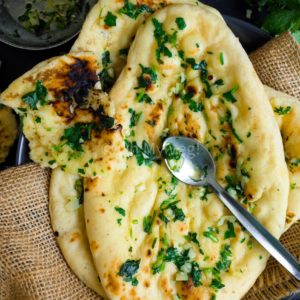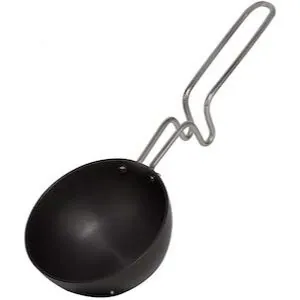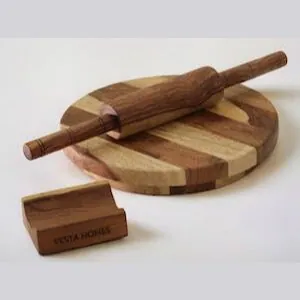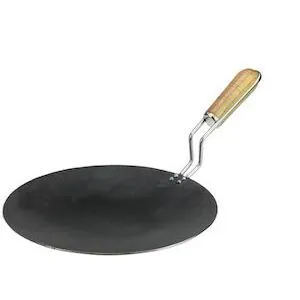
Fluffy, Soft & Bubbly Garlic and Coriander Indian Naan (Eggless)
This is the softest, most flavoursome, and most delicious authentic naan you'll ever try!
Ingredients
For the Naan Dough:
- 50 ml warm water
- 7 g active dry yeast 7 grams = 2 teaspoons
- 8 ½ g granulated sugar 8.5 grams = 2 teaspoons
- 150 ml full fat milk warm
- 400 g plain flour all-purpose (AP) flour
- 6 g salt 6 grams = 1 teaspoon
- 180 g natural yoghurt
- 2 tablespoons oil
- 40 g plain flour to be added later
For the Garlic & Coriander Butter:
- 40 g butter
- 2 tablespoons garlic finely minced
- 20 g fresh coriander cilantro, finely mined
Instructions
Make the Dough
- Begin by activating the yeast. Add 50 ml warm water (not boiling, as this can kill the yeast!) to a small glass along with 7 g active dry yeast and 8 ½ g granulated sugar. Mix with a spoon. Let the mixture sit for around 10 minutes, in which time the yeast should bloom (turn frothy and develop bubbles).
- Heat 150 ml full fat milk in a small saucepan over low heat. Don't bring to a boil, just warm.
- Sift 400 g plain flour and 6 g salt into a large mixing bowl. Add the activated yeast mixture, warmed milk, and 180 g natural yoghurt. Mix — use a bread dough whisk, as it'll be too warm to handle at first. The dough will be extremely sticky. Don't worry! Begin kneading with your hands. Avoid using your knuckles. Pick up the dough and slap it back down again (a dough scraper can also help at this stage!). Repeat this process for around 5 minutes, until the dough becomes smooth. The dough will remain sticky, but do not add more flour!
- Drizzle 2 tablespoons oil over the dough and gently massage it in, until well incorporated. The dough will begin to get sticky again.
Rest the Naan Dough
- Grease a large bowl with oil and place the dough inside. Cover the bowl with clingfilm and leave it somewhere warm to rise. The dough is ready to use when it's doubled in size. This time can vary due to the temperature; expect it to take anywhere from two to six hours.
- Once the dough has risen, knead in the extra 40 g plain flour. Grease your hands with oil and use a dough scraper/cutter to separate the dough into eight equal-sized pieces.
Roll out the Naan
- Work with one piece of dough at a time. Take one and shape into a rough ball. Sprinkle flour on your work surface and the dough ball. Using a rolling pin, gently begin to roll the naan into an oval shape. It will be very pliable, easy to stretch, and still slightly sticky. Don't roll the naan too big; the process of transferring it to the tawa/oven later stretches it more.
- Repeat this process with the other dough balls. Layer parchment paper between your rolled out naan to ensure they don't stick together, or work one-at-a-time.
Cook the Naan
- On a gas hob*, preheat your tawa over high heat for two minutes. Once hot, prepare a bowl of cold water next to your work station. Gently dust off any excess flour from the naan and lay it across your hand. Spread cold water over one side, and lay this wet side directly on the tawa. Note: A "naan cushion" can make this process easier.
- Once the naan is on the tawa, cook for around 30 seconds. Turn the tawa upside down and directly roast the naan over the naked flame. The naan surface will begin to bubble. To achieve even charring, move the tawa in circle motions. Once cooked, use a spatula to carefully pry the naan from the tawa. Repeat this process with the remaining naan.
Make the Garlic Butter
- In a small tadka/tempering pan, heat 40 g butter over low-medium heat. Add 2 tablespoons garlic (minced), and cook until the butter becomes aromatic and garlic begins to turn golden. Turn off the heat and add 20 g fresh coriander (chopped). Once the naan are cooked, spread this garlic coriander butter over the surface to infuse with a lovely flavour.
Notes
Naan is always best cooked in a tandoor, but not many of us are lucky enough to have one at hob! A gas hob is the next best thing. But what should you do if you don't have either?
To cook naan on an induction hob, I recommend using a cast iron tawa. Don't wet the naan. Simply cook one side, then finish the other side with a blowtorch. I've had readers offer great feedback using this method, and having tried it myself, it works almost as well!
Alternatively, preheat a pizza stone in your oven, and cook the naan on the stone. This also yields great results. Your naan will typically be "puffed" all over, rather than having distinctive bubbles, but the texture will be there.
Nutrition
Serving: 1gCalories: 303kcalCarbohydrates: 46gProtein: 8gFat: 10gSaturated Fat: 4gPolyunsaturated Fat: 1gMonounsaturated Fat: 4gTrans Fat: 0.2gCholesterol: 16mgSodium: 344mgPotassium: 154mgFiber: 2gSugar: 3gVitamin A: 347IUVitamin C: 1mgCalcium: 66mgIron: 3mg
Tried this recipe?Please consider leaving a review!


